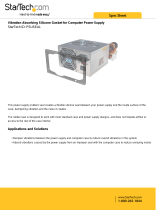
2
Contents
VEGAMIP R62 • Receiving unit
41911-EN-200522
Contents
1 About this document ............................................................................................................... 4
1.1 Function ........................................................................................................................... 4
1.2 Target group ..................................................................................................................... 4
1.3 Symbols used................................................................................................................... 4
2 For your safety ......................................................................................................................... 5
2.1 Authorised personnel ....................................................................................................... 5
2.2 Appropriate use ................................................................................................................ 5
2.3 Warning about incorrect use ............................................................................................. 5
2.4 General safety instructions ............................................................................................... 5
2.5 EU conformity ................................................................................................................... 6
2.6 Radio license for Europe .................................................................................................. 6
2.7 Installation and operation in the USA and Canada ........................................................... 6
2.8 Environmental instructions ............................................................................................... 6
3 Product description ................................................................................................................. 7
3.1 Conguration .................................................................................................................... 7
3.2 Principle of operation........................................................................................................ 7
3.3 Packaging, transport and storage ..................................................................................... 9
3.4 Accessories.................................................................................................................... 10
4 Mounting ................................................................................................................................. 12
4.1 General instructions ....................................................................................................... 12
4.2 Mounting instructions ..................................................................................................... 13
5 Connecting to power supply ................................................................................................. 25
5.1 Preparing the connection ............................................................................................... 25
5.2 Connection procedure .................................................................................................... 26
5.3 Wiring plan receiving unit ............................................................................................... 28
6 Setup ....................................................................................................................................... 31
6.1 Adjustment system ......................................................................................................... 31
6.2 Adjustment ..................................................................................................................... 32
7 Maintenanceandfaultrectication ...................................................................................... 37
7.1 Maintenance .................................................................................................................. 37
7.2 Rectify faults ................................................................................................................... 37
7.3 Exchanging the electronics ............................................................................................ 38
7.4 How to proceed if a repair is necessary .......................................................................... 38
8 Dismount................................................................................................................................. 39
8.1 Dismounting steps.......................................................................................................... 39
8.2 Disposal ......................................................................................................................... 39
9 Supplement ............................................................................................................................ 40
9.1 Technical data ................................................................................................................ 40
9.2 Dimensions .................................................................................................................... 44
9.3 Industrial property rights ................................................................................................. 48
9.4 Trademark ...................................................................................................................... 48





















